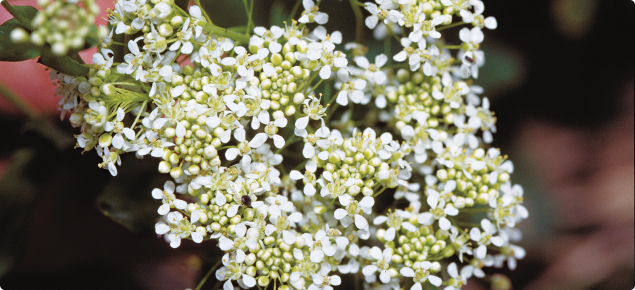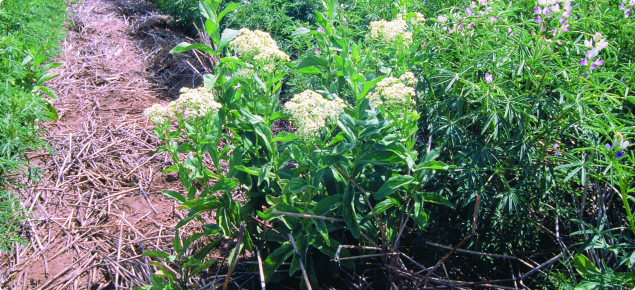| REPORT THE PRESENCE OF THIS PEST BEFORE UNDERTAKING CONTROL |
Information about this pest can be found on the hoary cress: declared pest page.
Login or set up a new account on DPIRD's online training site to access:
- a training course on how to identify hoary cress and report it.
- training material that you can use to teach community groups how to identify hoary cress.
Chemical requirements
When using any agricultural chemicals please ensure that you always follow instructions on the label and any permit. Users of agricultural chemical products must always strictly comply with the directions on the label and the conditions of any permit. To view permits or product labels go to the Australian Pesticides and Veterinary Medicines Authority website.
Chemical control options
Chemical control options can be found below. For other methods of control please refer to the aquatic weed control page, and the declared plant control handbook.
Recommended herbicides | Shortly after full emergence
Rosette to pre-flowering
Late rosette stage
|
|---|
| Herbicide: Picloram + 2,4-D amine (Group I) (various trade names: see APVMA link) | |
| Active ingredient | 75g/L picloram + 300g/L 2,4-D |
| Rates of dilution for spot spraying | 1:120 |
| Amount of product/10L water | 80mL |
| Rate of product/ha | Not recommended |
| Time of application | Winter-spring from rosette to pre-flowering |
| Remarks | Re-treatment may be necessary |
| More information and other control methods |
|
| Herbicide: 2,4-D LV ester (Group I) (various trade names: see APVMA link) | |
| Active ingredient |
|
| Rates of dilution for spot spraying |
|
| Amount of product/10L water |
|
| Rate of product/ha |
|
| Time of application | Winter-spring from rosette to pre-flowering |
| Remarks | Suitable for larger areas. Re-treatment will be necessary. |
| More information and other control methods |
|
| Herbicide: Chlorsulfuron (Group B) (various trade names: see APVMA link) | |
| Active ingredient | 750g/kg chlorsulfuron |
| Rates of dilution for spot spraying | 2g/100L |
| Amount of product/10L water | 0.2g |
| Rate of product/ha | 20g |
| Wetting agent dilution | 1:1000 |
| Time of application | Shortly after full emergence |
| More information and other control methods |
|
| Herbicide: Glyphosate (Group M) (various trade names: see APVMA link) | |
| Active ingredient | 360, 450, 490, 500 and 540g/L and 680 and 840g/kg glyphosate |
| Amount of product/10L water |
Adjust rates for other concentrations of glyphosate |
| Rate of product/ha | 1.5L for 360g/L concentration |
| Wetting agent dilution | As per label for various formulations |
| Time of application | Late July to September. Plants in late rosette stage to flowering. |
| Remarks | Plant should be actively growing |
| More information and other control methods | Wiper application may be used where sufficient stem present. Mix 1L in 5–10L water. |
| Herbicide: Roundup® Biactive, Razor® (Group M) | |
| Active ingredient | 360g/L glyphosate |
| Rates of dilution for spot spraying | 1:200 |
| Amount of product/10L water | 50mL |
| Rate of product/ha | 1.5L |
| Wetting agent dilution | 1:400 of non-ionic product |
| Time of application | Late July to September, when plants in late rosette to flowering |
| Remarks | Preferred treatment of glyphosate for wet areas where shallow water is present |
| More information and other control methods | Wiper treatment may be useful when sufficient stem material present. Mix 1L in 5–10L water. |



